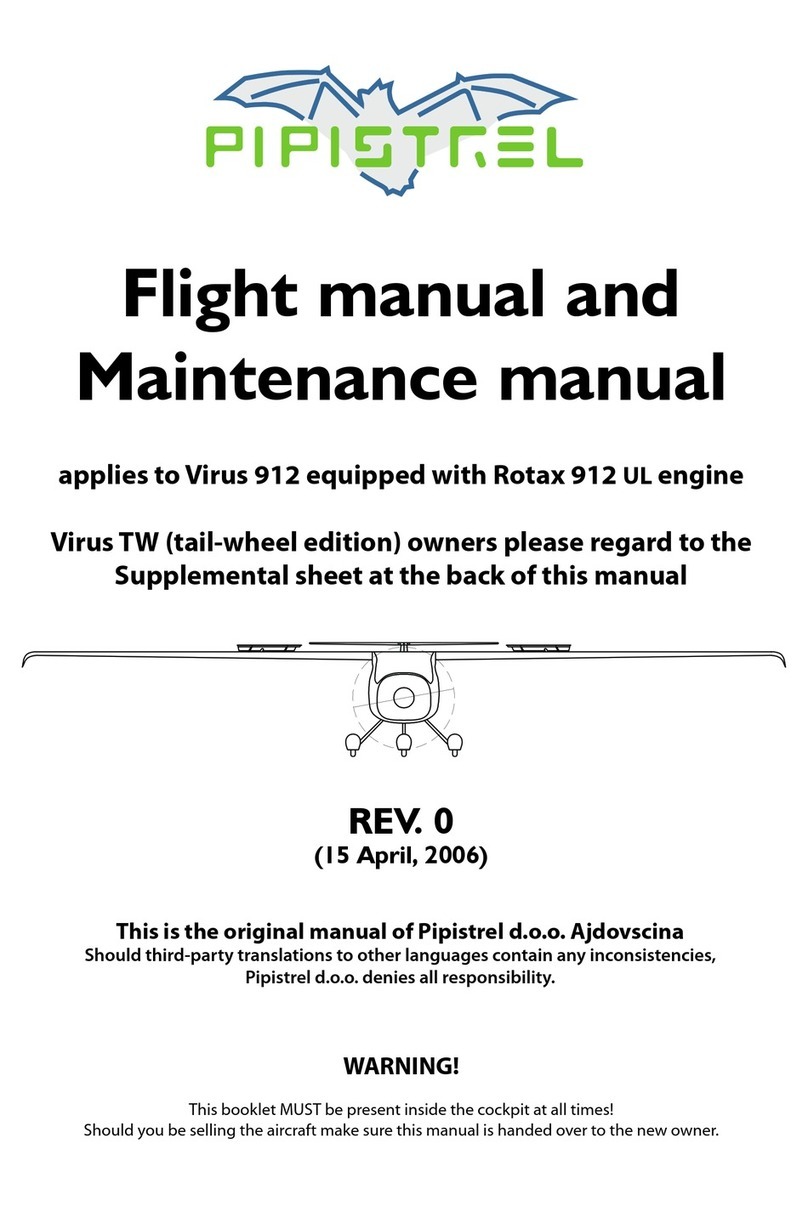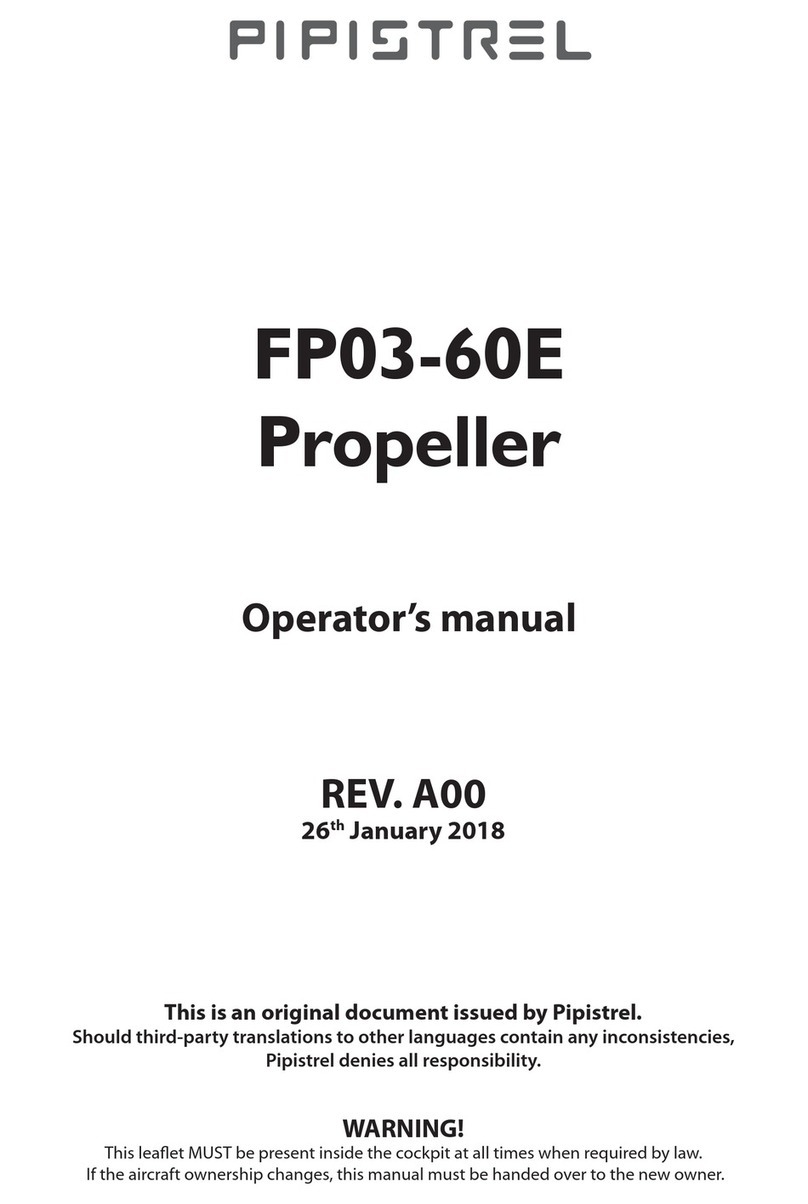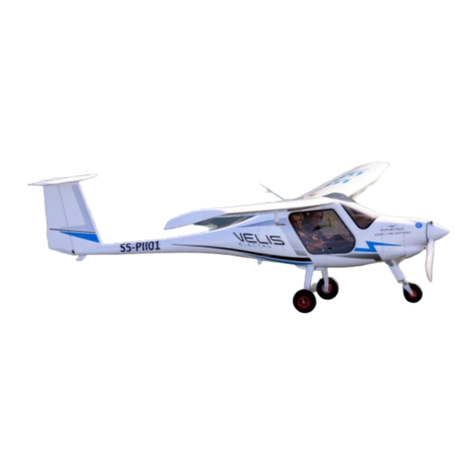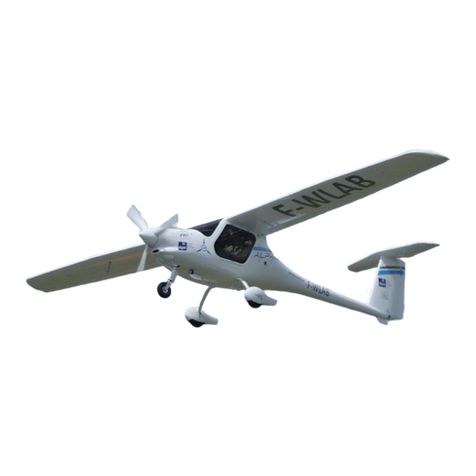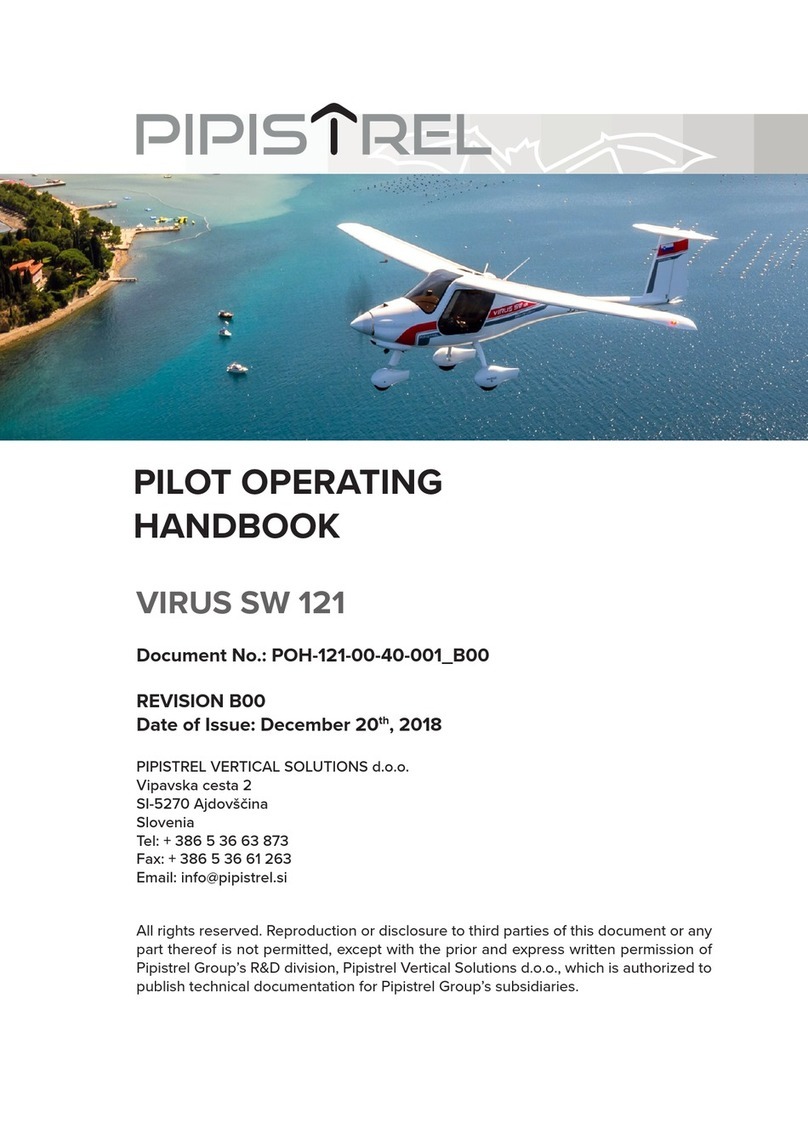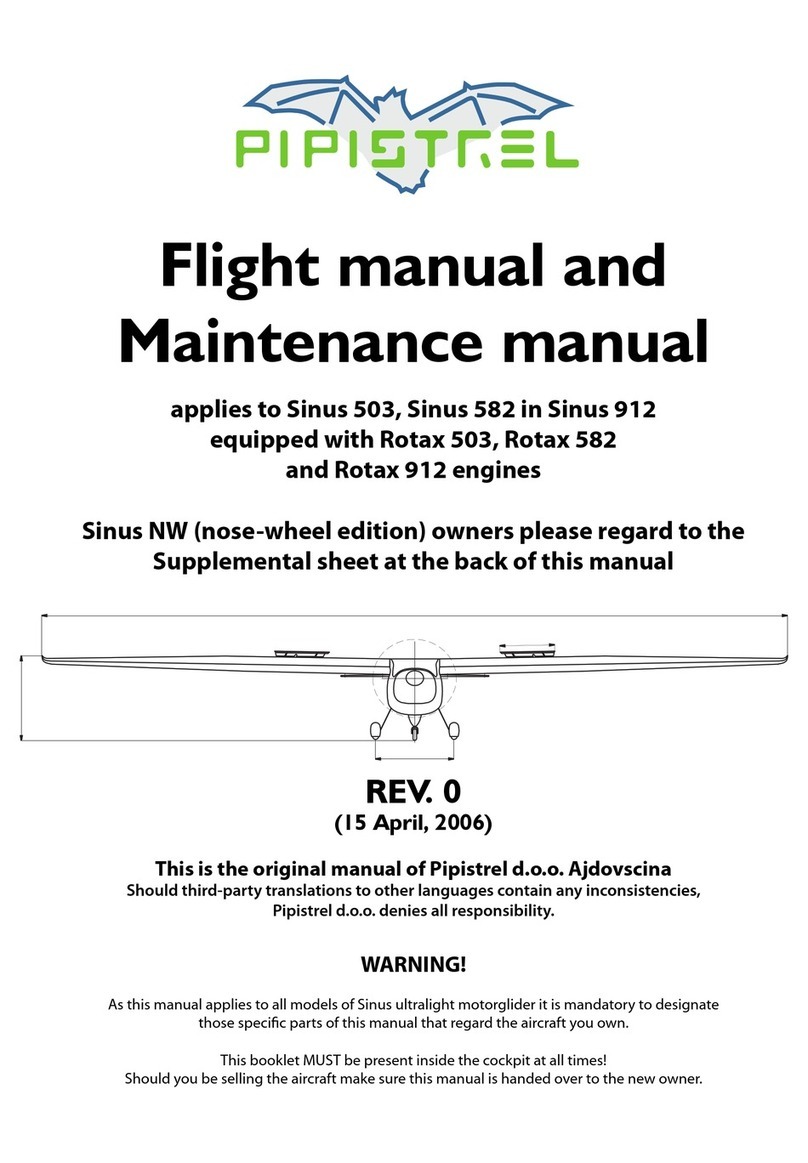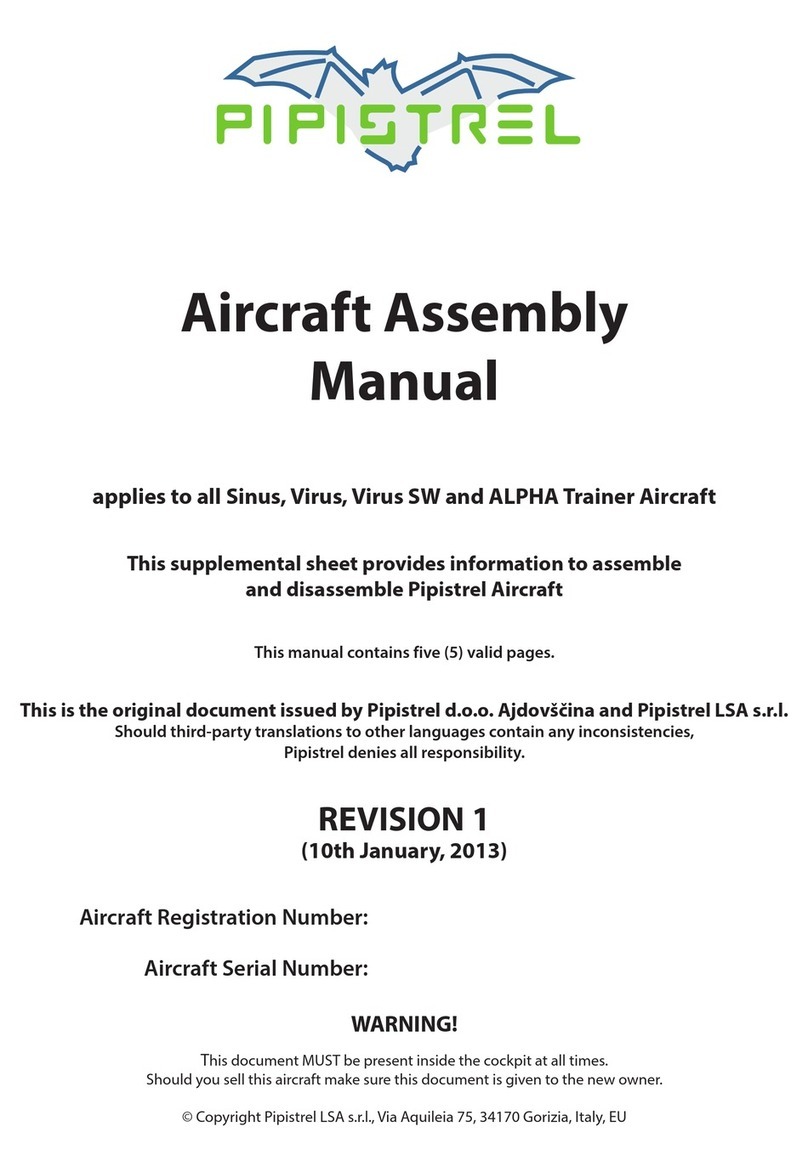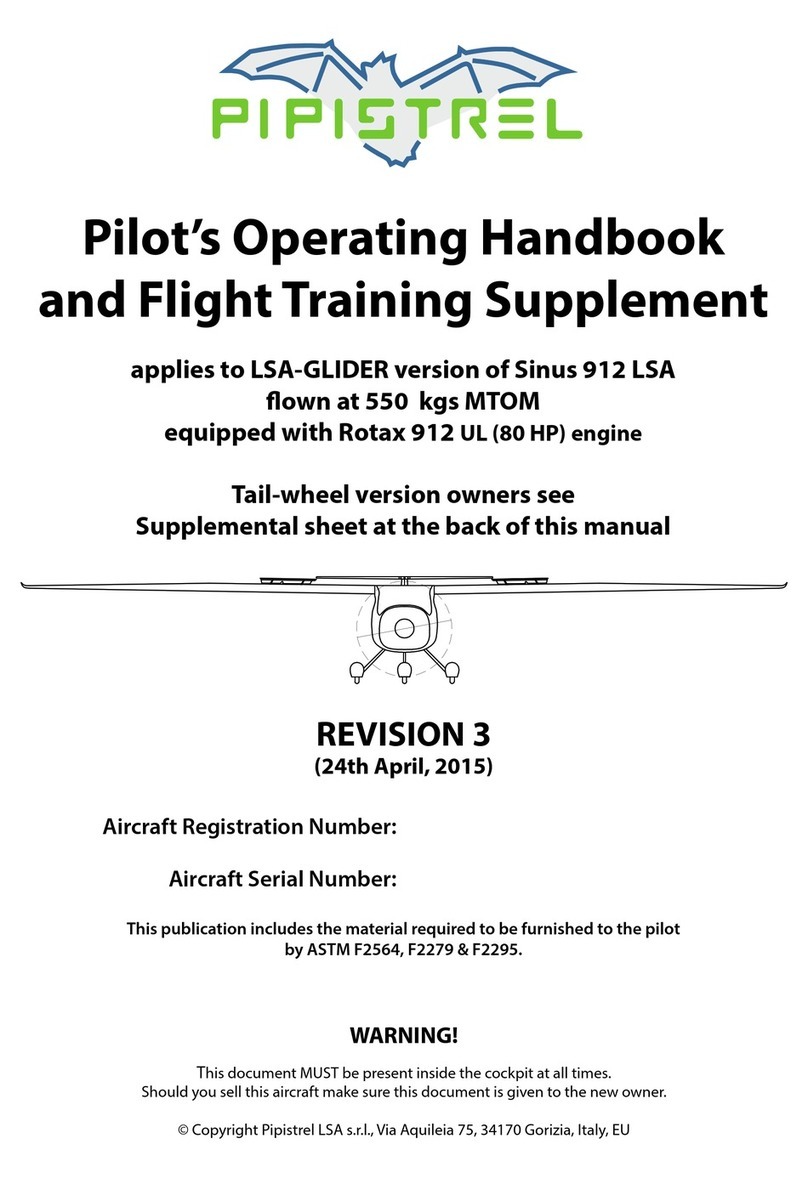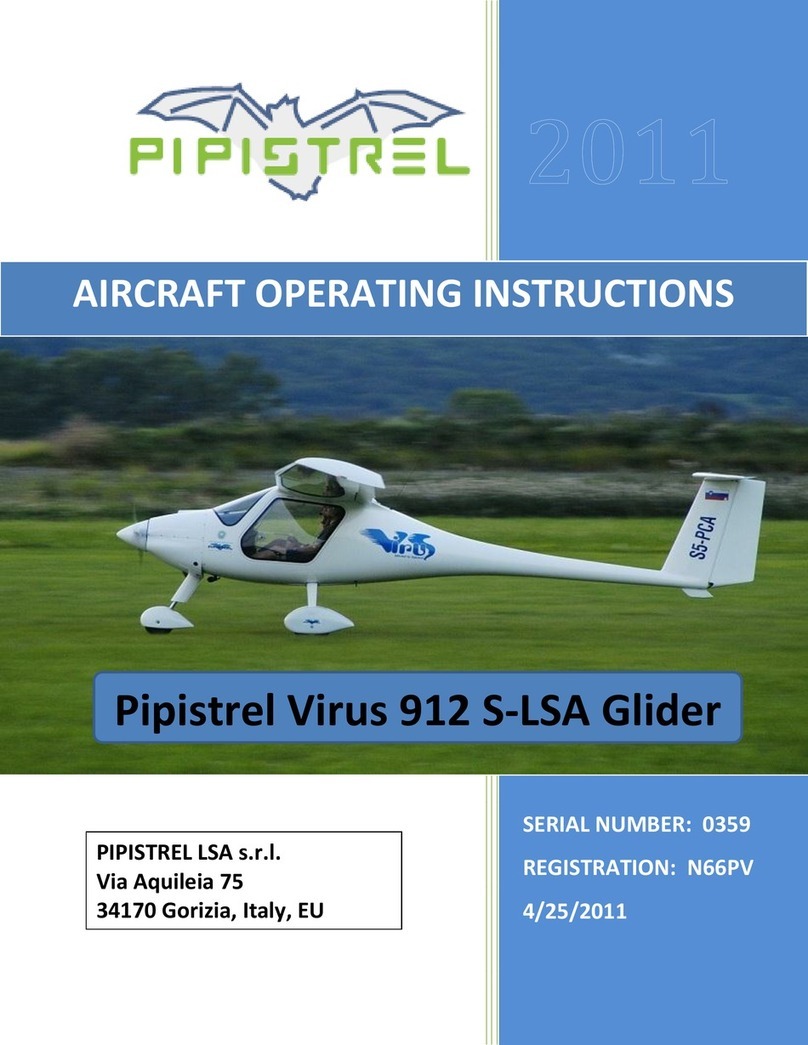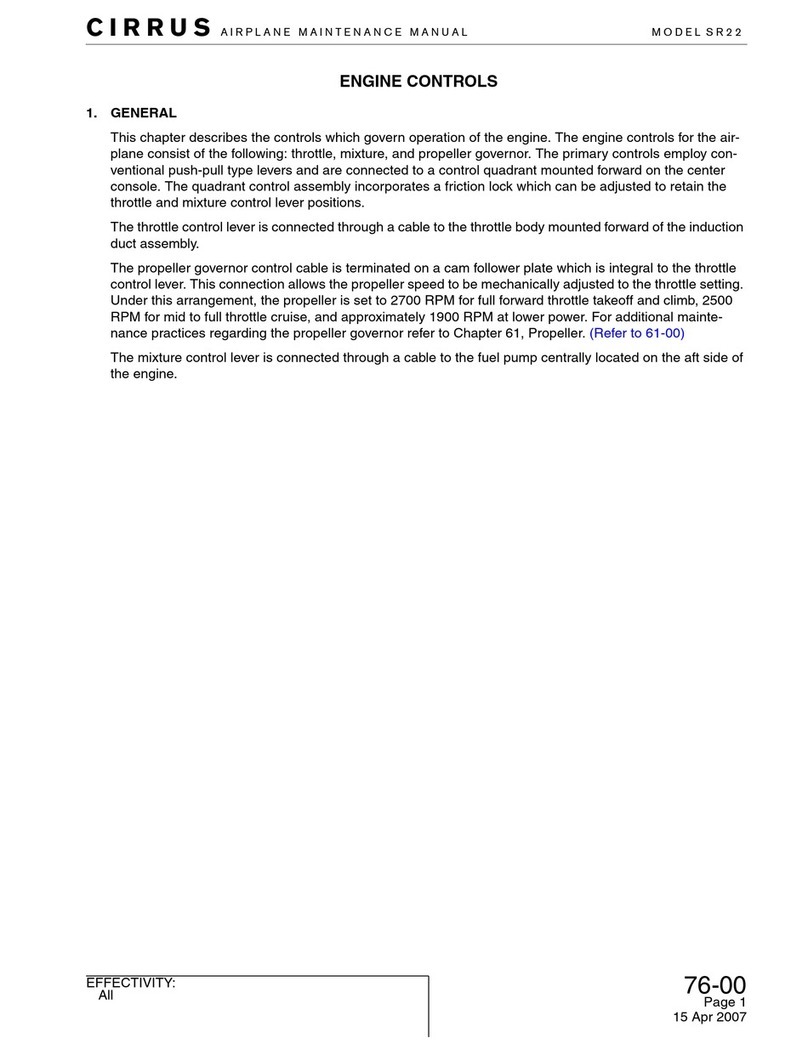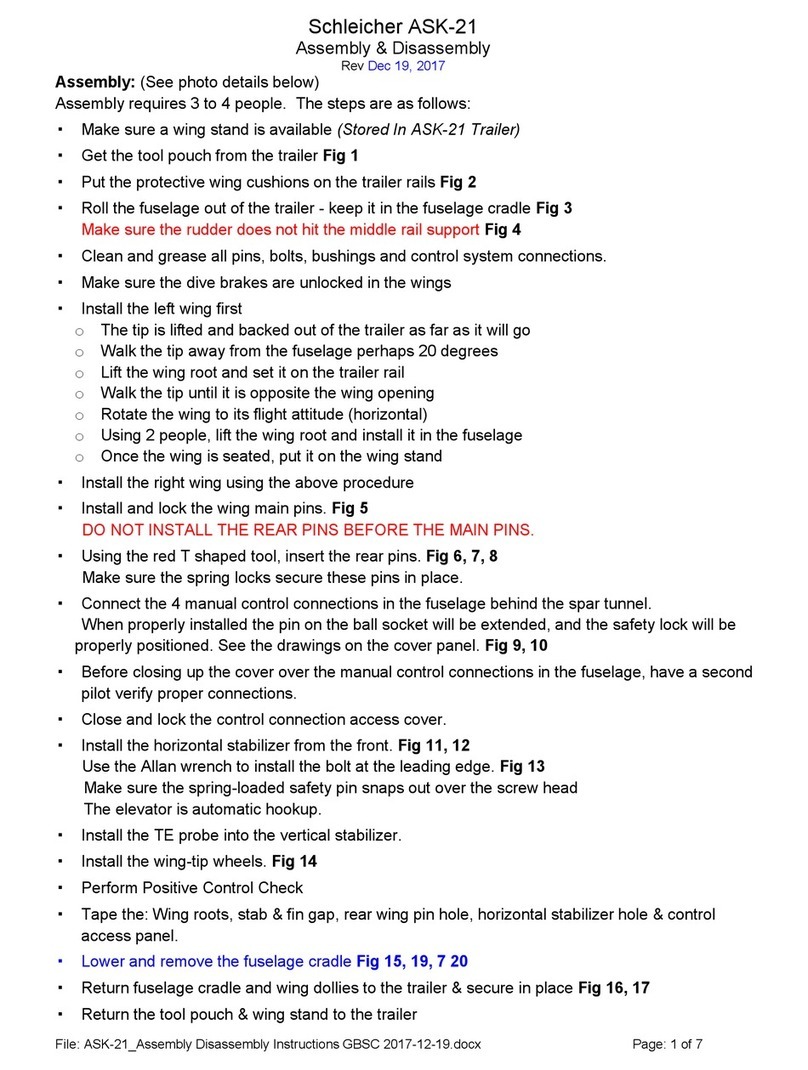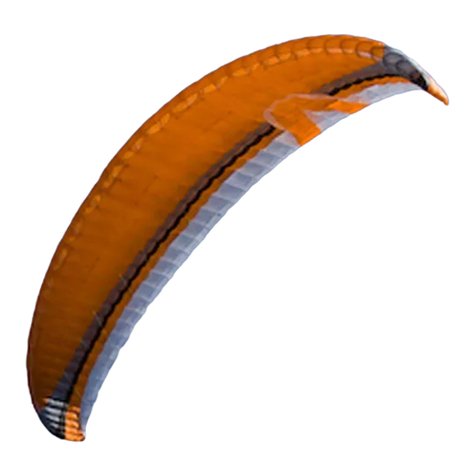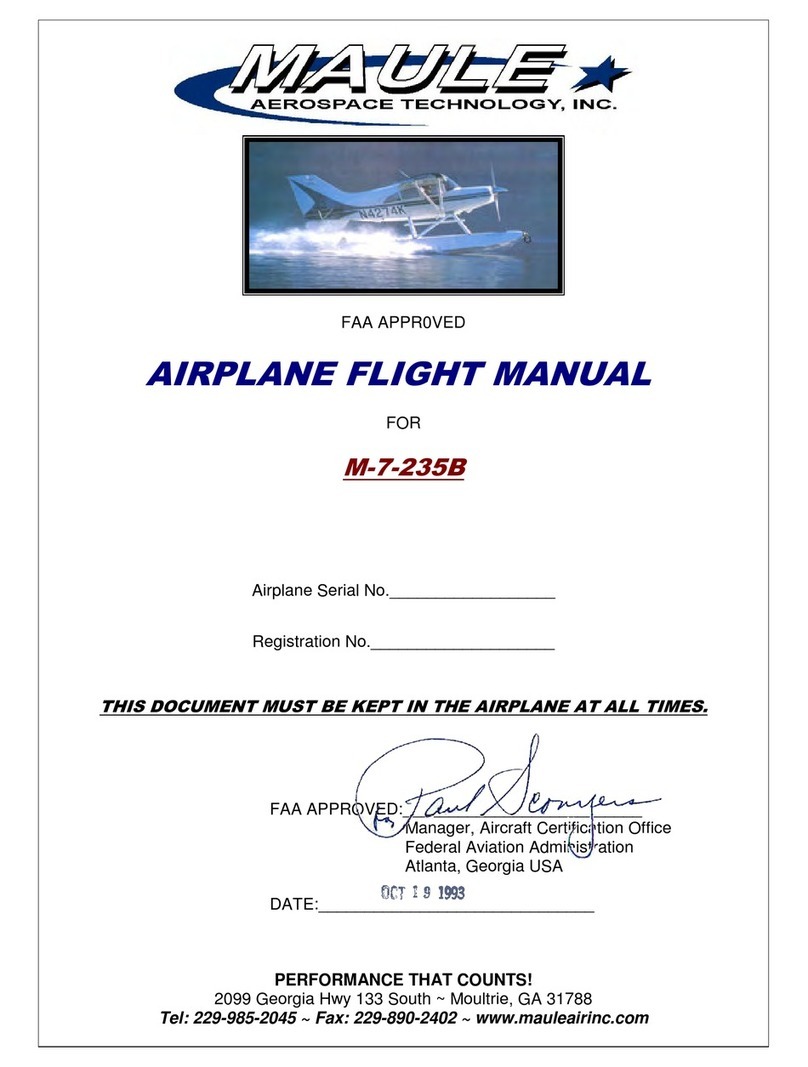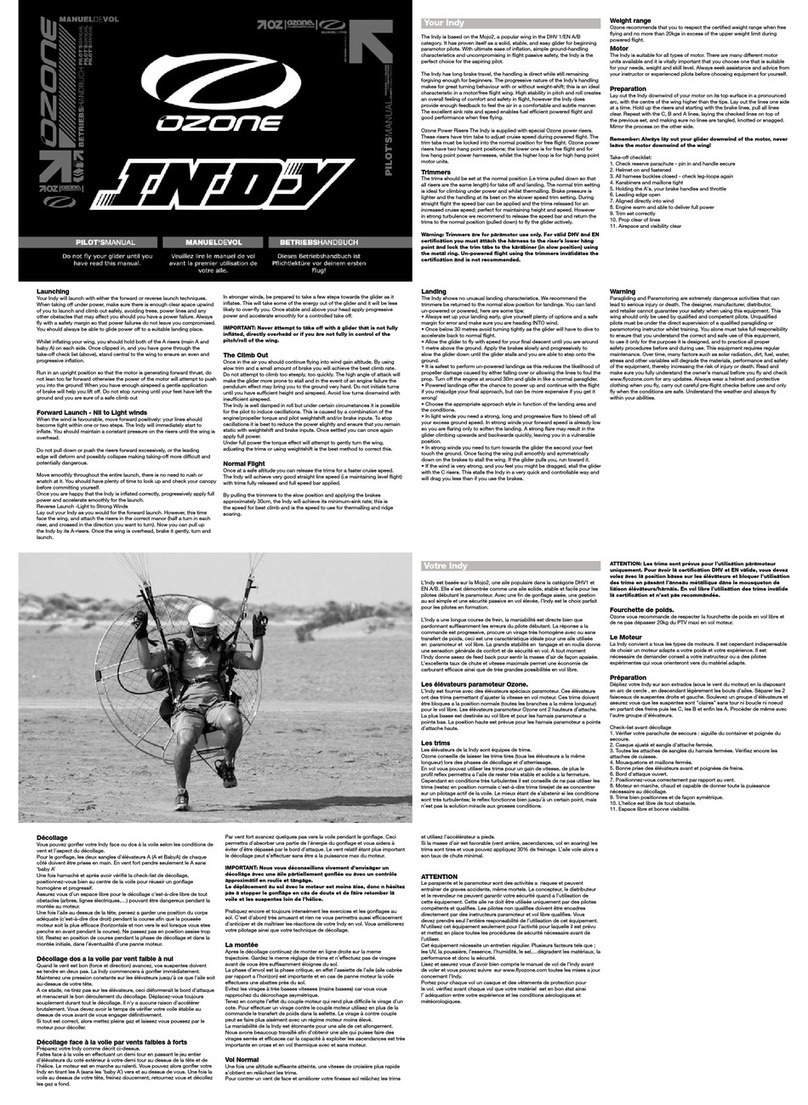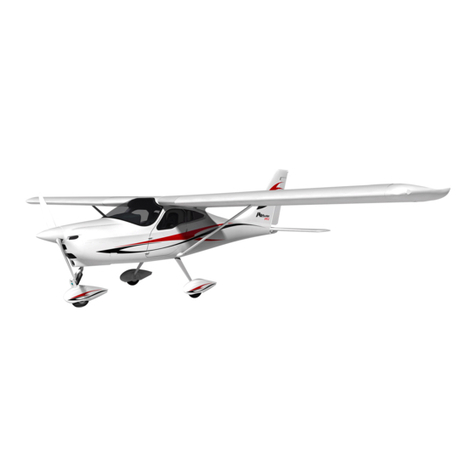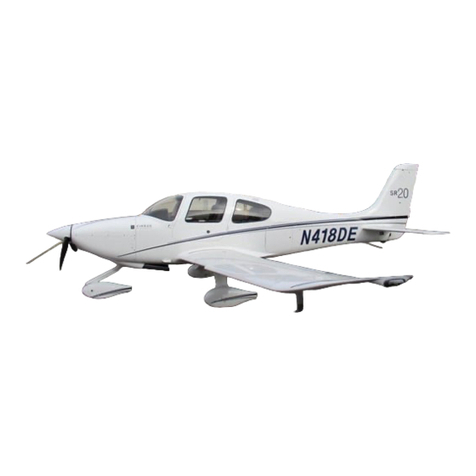pipistrel.si
Materials used in manufacturing process
Composite parts are made of:
fabric: GG160, GG200, 90070, 92110, 92120, 91125, 92140, 92145, KHW200
roving: NF24
foam: 75 kg/m3 PVC 3mm, PVC 5 mm, PVC 8mm
GFK: 3 mm, 5 mm, 7 mm of thickness
paint: gelcoat
heat resistant protection glass-aluminium sandwich
Metal parts used are:
tubes: materials: Fe0146, Fe 0147, Fe0545, Fe1430, AC 100, CR41 in LN9369
sheet metal: materials: Fe0147 in Al 3571
rods: materials: Fe 1221, Fe 4732, Č4130, Al 6082, CR41 in Al 6362
cable: AISI 316
bolts and nuts: 8/8 steel
All composite parts are made of glass, carbon and kevlar ber manufactured by Interglas GmbH.
All parts have been tested at safety factor 1.8, meaning stressed to 7,2 G
All parts are made in moulds, therefore no shape or structural dierences
can occur.
All designing, manufacturing and testing complies with following regulations:
• Bauvorschriften für Ultraleichtflugzeuge des Deutschen Aero Club e.V. Beauftragter des
Bundes-ministeriums für Verkehr
• JAR-1 microlight definition
• EASA CS-22 - certain sections
• EASA CS-VLA -certain sections
for Slovenian market also: Pravilnik o ultralahkih napravah Republike Slovenije.
All parts and materials presented in all versions of Sinus ultralight motorglider and
Virus 912 are also being used in glider and general aviation industry and all comply
with aviation standards.
WARNING! WHEN SERVICING OR REPLACING PARTS ALWAYS USE THE SAME
MATERIAL AS USED ORIGINALLY SEE ABOVE.
General
